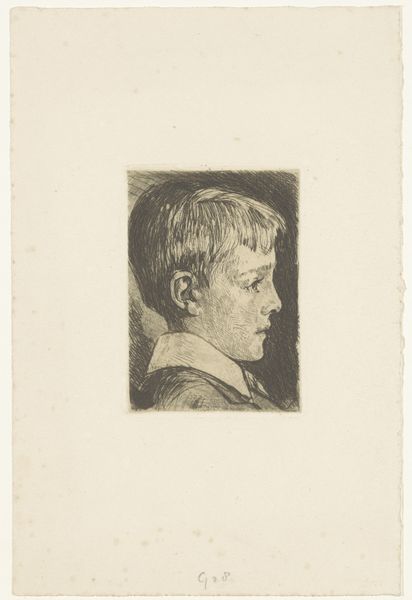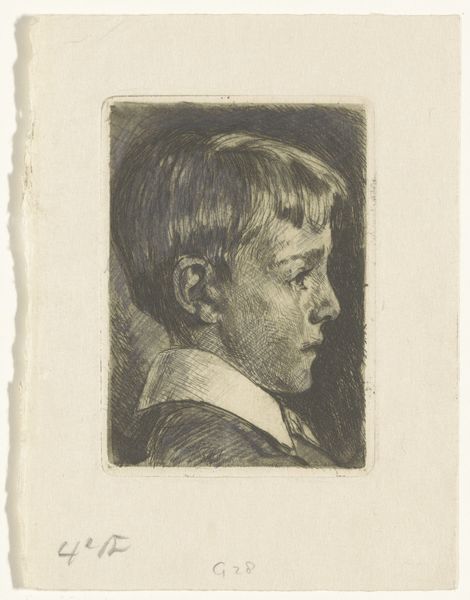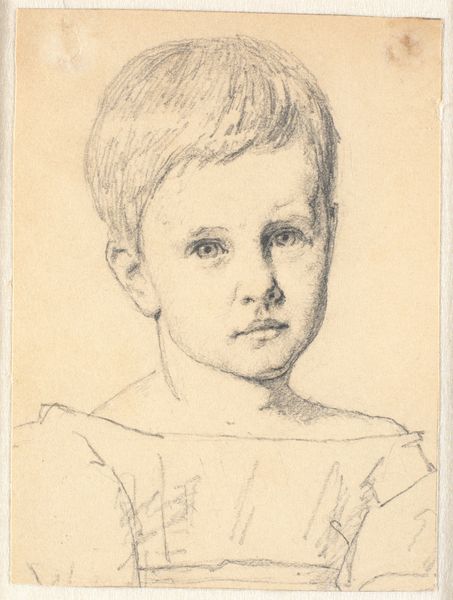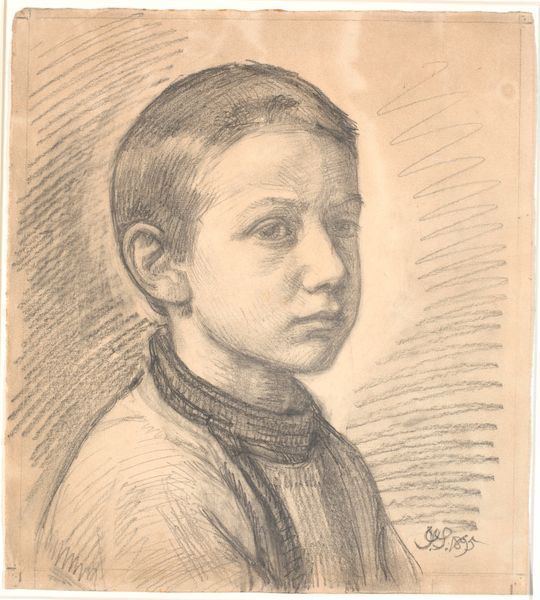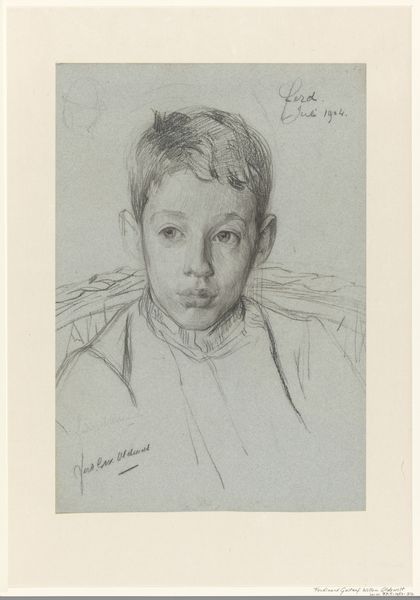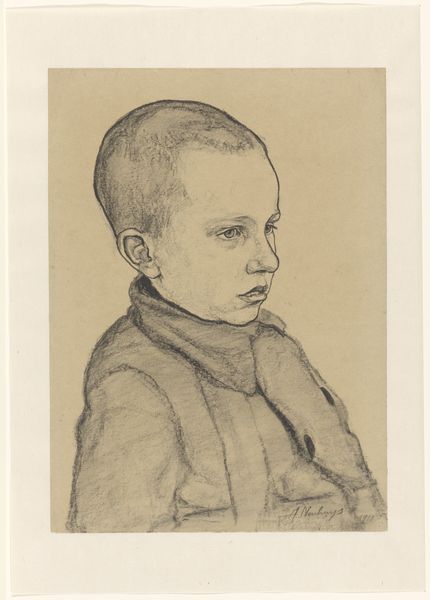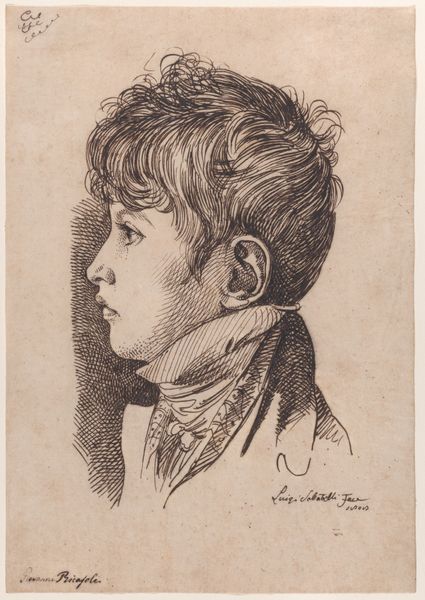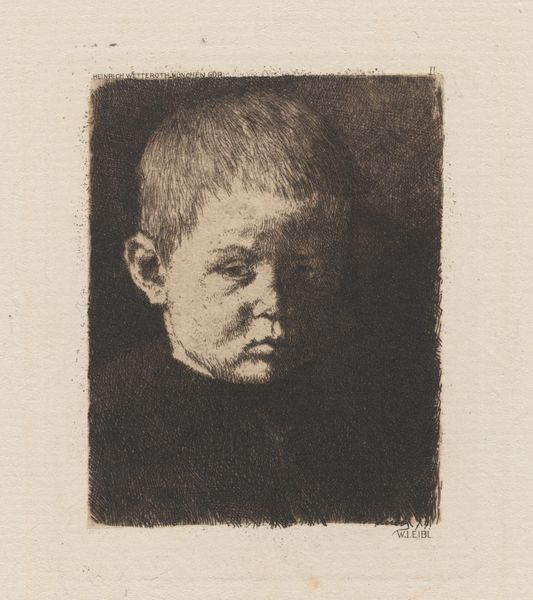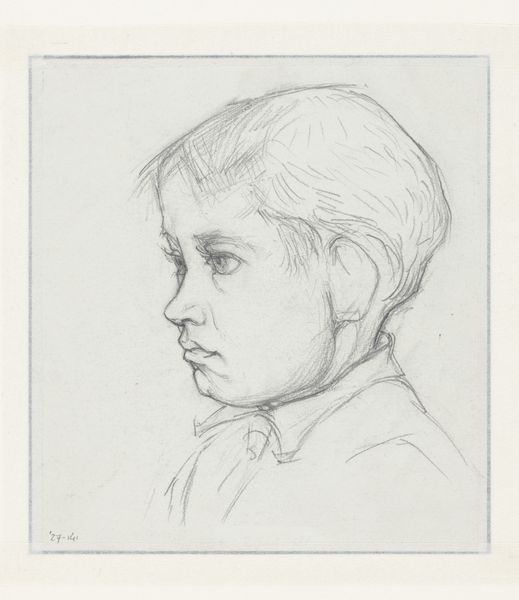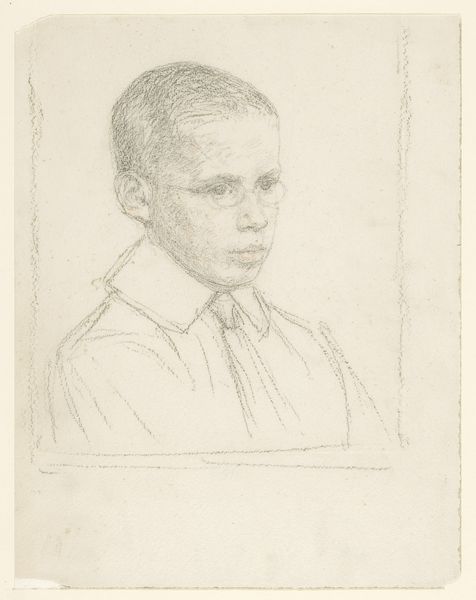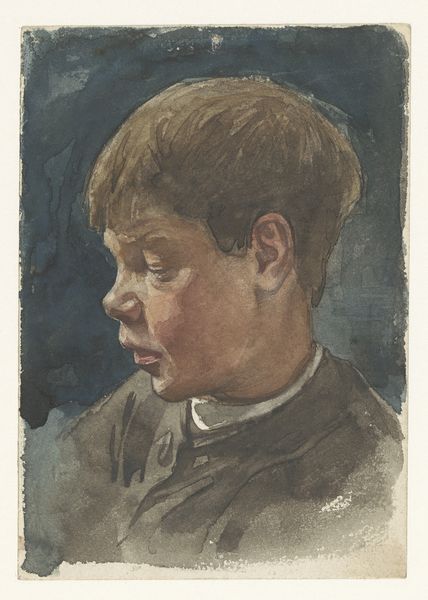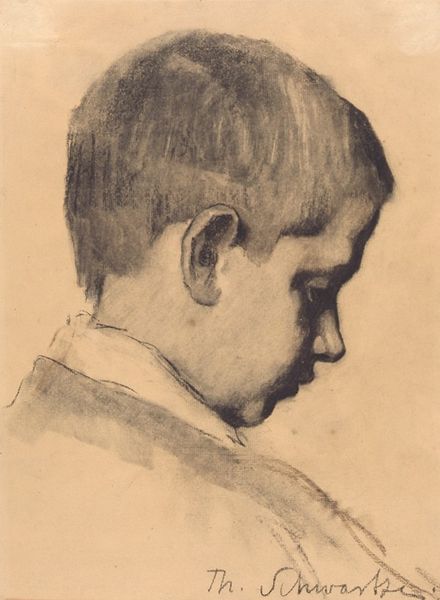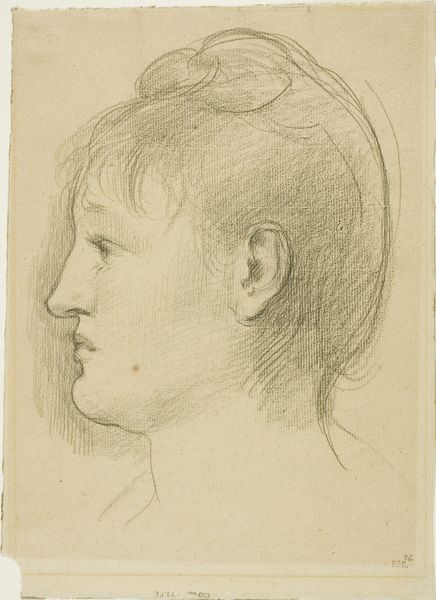
Dimensions: height 205 mm, width 136 mm
Copyright: Rijks Museum: Open Domain
Editor: This is Willem Bastiaan Tholen's "Jongenskop," dating sometime between 1870 and 1931, currently held at the Rijksmuseum. It's a simple pencil drawing, but the subject's gaze is quite intense. What strikes you most about this work? Curator: The gaze, precisely! Notice how Tholen captures a sense of introspection. In the symbol language of portraiture, to avert one's gaze often signifies contemplation, or even a touch of melancholy. The boy is looking towards something beyond the frame, and, by extension, perhaps beyond our immediate reality. Editor: That's interesting. So you see the averted gaze as a symbol of something deeper? Curator: Absolutely. And consider the pencil medium itself. Pencil, often used for sketches and preparatory studies, hints at a process of becoming, an unveiling. Is the artist revealing a soul in progress, or simply practicing capturing a likeness? What stories might that young boy's face contain, etched by time? Editor: It makes me think about the fleeting nature of childhood, and the weight of potential carried in those years. The delicate shading with pencil conveys a sense of fragility. Curator: Precisely. Does it remind you of any other images or stories? Think of archetypes – the innocent youth, the dreamer. What is Tholen telling us through this portrait? Is it a general statement about youth, or a commentary on the boy himself? Editor: I hadn’t considered how much the medium itself contributes to the message. Thank you; that’s a different lens through which to view portraiture. Curator: It's always fascinating to uncover the layers of meaning within seemingly simple images. These symbols invite us to reflect on our shared human experiences across time.
Comments
No comments
Be the first to comment and join the conversation on the ultimate creative platform.
